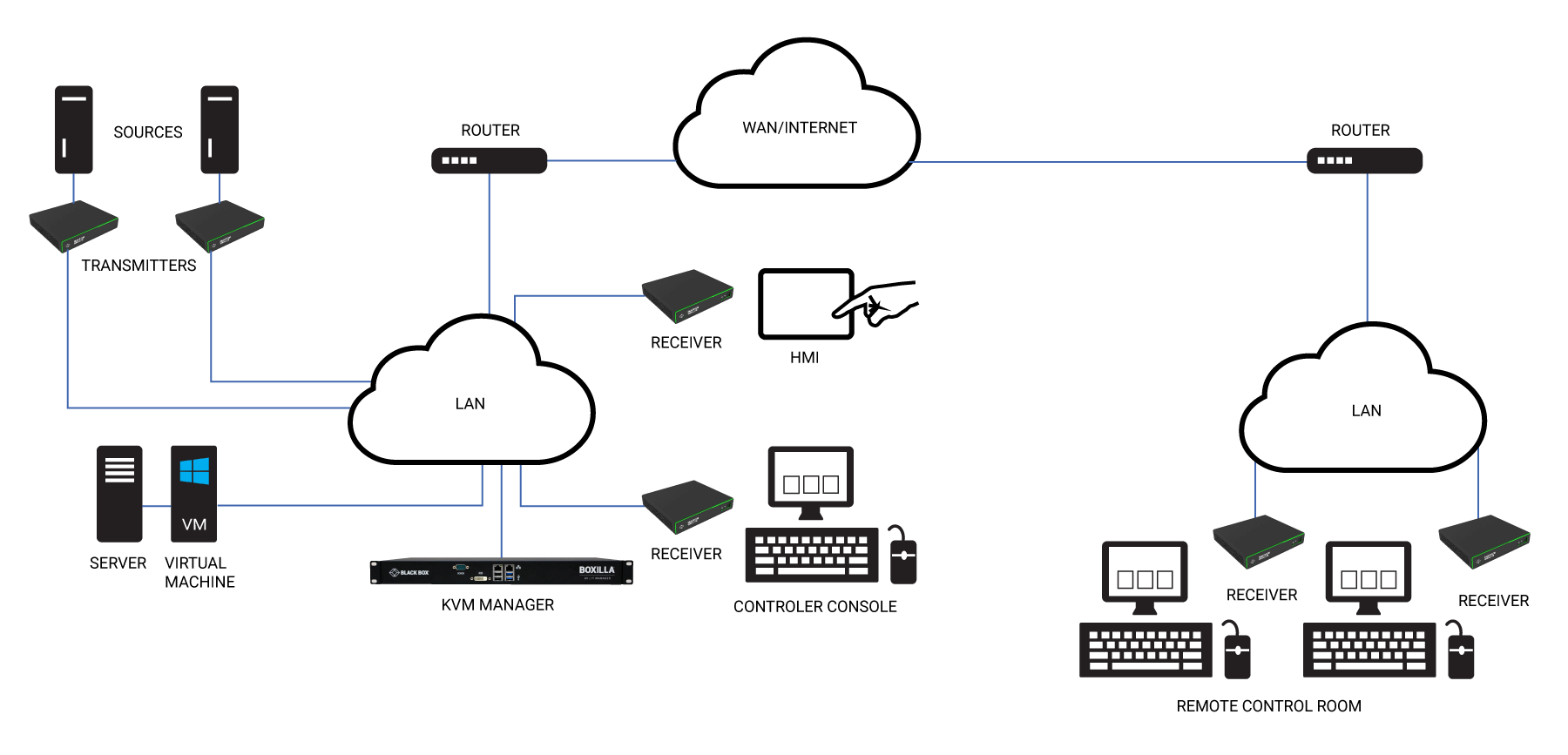Designing the Control Room Solution Your Clients Want and Need

In any industry or sector, the success of a control room upgrade or build depends on how well the installed solution streamlines workflows, enhances the operator experience, improves situational awareness, supports informed decision making, and fosters collaboration. These are the immediate requirements of a mission-critical control room environment. Add economical growth, straightforward scalability, and the flexibility to embrace new technologies, and the client has a future-proof facility likely to stand the test of time.
A complete solution built on a unified KVM (keyboard, video, mouse) connectivity and signal distribution system goes a long way in addressing all of these control room design requirements. The KVM system itself enables flexible routing, switching, and extension of signals between source PCs, physical and virtual servers, control interfaces, peripherals, and visualization systems. As a result, hot, noisy, space-consuming computers and servers can be situated in a secure, climate-controlled equipment room, either local or remote, thanks either to a proprietary connection or IP network.
Within the control room, operators gain the benefit of a convenient access to multiple computers and OSes such as Mac OS X, Windows, and Linux, along with convenient, customized access to the data and control functionality specific to their work. Unlike software-based remote access solutions, KVM extender solutions ensure high-speed, real-time access to source PCs at high resolutions, which means that operators see no lay off in performance.
[Elements Driving Change in Today's Control Rooms]
In addition to tackling day-to-day requirements of operators and administrators, KVM technology also offers benefits that help to future-proof the control room design. Scalability is foremost among these benefits. The control room administrator will be able to add new users and servers to the system with ease, rather than having to re-specify the whole system. Advanced KVM technology supports both legacy and IP connections, so clients that opt for IP or hybrid networks can easily add new endpoints to an existing IP switch rather than invest in an entirely new switch, an additional card for the switch, or the costly equipment that would be needed to cascade the system.
IP is an attractive solution not just because it is cost-effective and highly scalable; if the client is interested in implementing IP infrastructure along with KVM technology, then virtualization becomes a possibility. Companies consider virtualization for control room applications primarily because they understand the cost and energy savings that come with replacing physical machines with virtual machines. The math is simple: Using two virtualized servers to host multiple systems and applications is more cost-effective than putting up 10 physical servers. Further time and cost savings come from being able to use a centralized system management platform to perform updates and maintenance across all machines.
A unified KVM solution, ideally with tightly integrated video wall software and a platform for overall system management, provides a flexible foundation for optimizing control room operations. Design and deploy robust KVM technology, and the resulting control room installation will afford its users the complete connectivity, control, and visualization capabilities they want and need.
A daily selection of features, industry news, and analysis for AV/IT professionals. Sign up below.

